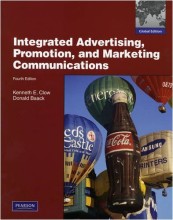Summary: Cognitive Psychology | 9780077122669 | Gilhooly, et al
- This + 400k other summaries
- A unique study and practice tool
- Never study anything twice again
- Get the grades you hope for
- 100% sure, 100% understanding
Read the summary and the most important questions on Cognitive Psychology | 9780077122669 | Gilhooly; Dittrich; Lyddy; Pollick
-
1 Introduction
This is a preview. There are 83 more flashcards available for chapter 1
Show more cards here -
how do we call principles of internal representations of concepts of the external reality?
mental representations. -
how do we call a learning device used to aid memory?
a mnemonic -
what is a key feature for mnemonic techniques?
imagination. -
which mnemonic technique is described; remembering a set of concepts by making visual representations for these objects and placing these representations along a familiar route?
method of loci. -
which mnemonic technique is described; when learning a new language, making an association between a new word from L2, and a word from L1, and making a visual representation of this association.
the keyword method. -
which mnemonic technique is described; when learning a set of numbers represent each number with a letter or sound of a letter in a logical way, like n stands for two because it has two sticks and m or w stands for 3 for the same reason. this way a word or longer sound is created from a set of numbers.
the phonetic number system, or the major system. -
how do we call the philosophical school which holds that all knowledge comes from experience?
empiricism. -
how do we call a linkage between mental contents so that activation of one content activates the linked contents.
associations. -
how do concepts become associated with each other?
- if they're close together in time, so the concepts occur right after each other every time, like dinner and dessert
- or if the concepts are close in space, chimney and roof can be associated with each other
- if there's a relationship of similarity between the two like a cup and a mug. -
why is using introspection criticized?
- it can only be used with people who are trained to introspect, so no research o animals, children, and people with mental disabilities.
- reporting what you are thinking while solving a problem can be distracting, thus introspection could be a confound.
- even trained subjects don't have access to all cognitive processes
- experiments by Wundt were hard to replicate in other labs.
- Higher grades + faster learning
- Never study anything twice
- 100% sure, 100% understanding

































